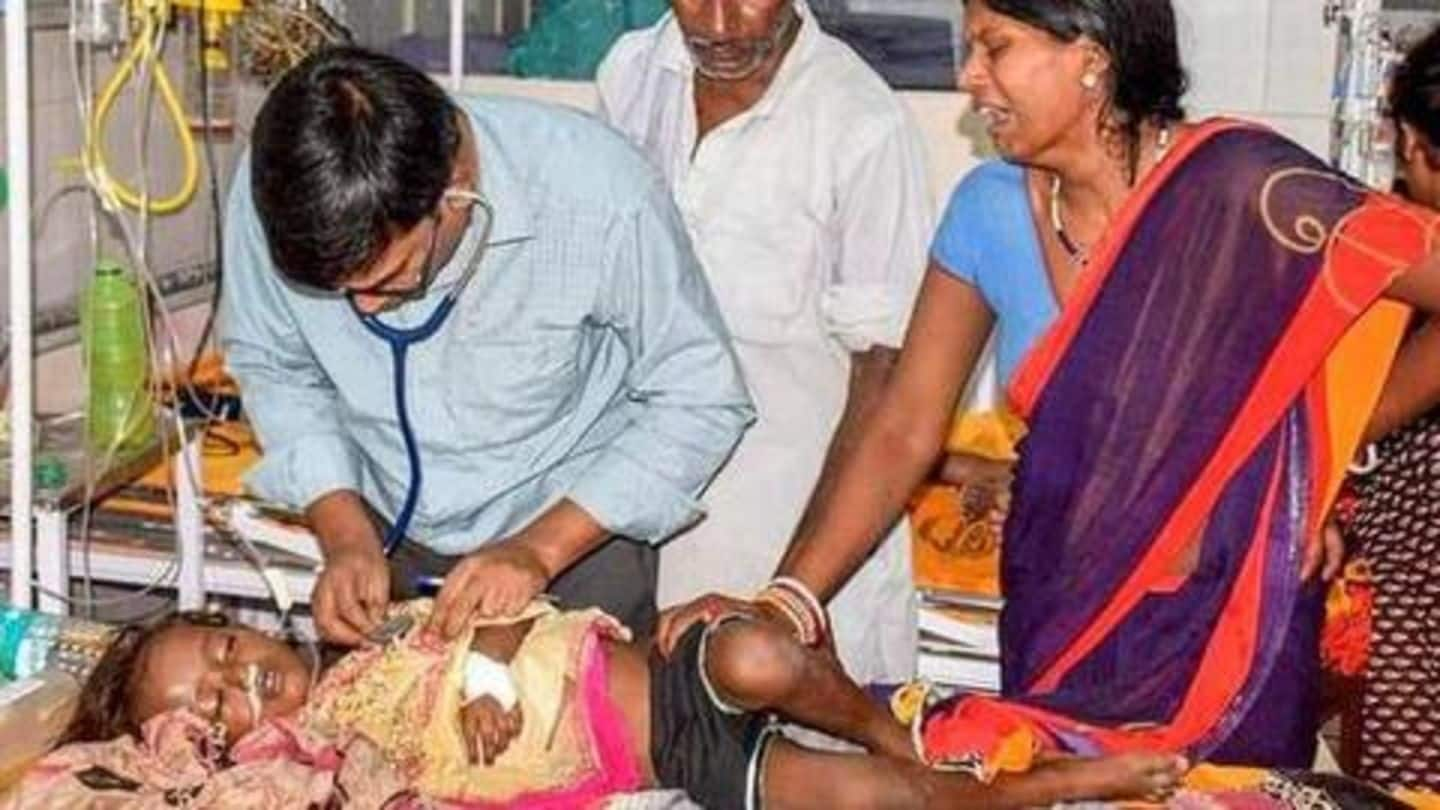
Bihar: Encephalitis kills 128 children. Is anyone paying attention?
What's the story
Bihar is reeling under a major health crisis, and with every passing day, things are only getting worse. An outbreak of Acute Encephalitis Syndrome (AES) has claimed lives of 128 children so far, with 15 kids dying on Wednesday. While the epicenter is Muzaffarpur, the deadly disease has also spread to other districts like Samastipur, Banka, and Vaishali. So, is anything being done to contain this problem? Let's dig deep.
Disease
What is Acute encephalitis syndrome?
Acute encephalitis syndrome or AES is a neurological disorder which affects the brain. Also referred to as 'brain fever' or Chamki Bukhar by locals, it affects infants and the elderly. The symptoms include high fever, headache, light-sensitivity, vomiting, confusion, seizures, paralysis, among others. In most cases, the children died because of a sudden drop in blood sugar level.
Litchi connection
Did Litchis cause the outbreak? Yes and no
Now, Muzaffarpur is a major litchi-cultivation zone, but those who consumed the seasonal fruit had little idea it would prove to be this deadly. Initially, the outbreak was attributed to toxins present in litchis, but later other details emerged. Apparently, the kids didn't fall ill because they ate litchis but because they went to bed empty stomach after consuming it.
Explanation
Litchis aren't the problem, poverty is
When well-nourished kids eat litchis, it hardly makes a difference because reserve glucose is stored as glycogen in their livers. But this isn't the case with malnourished kids, who have low glucose levels. In these cases, the liver is unable to meet the glucose demand and kids develop hypoglycemia. Subsequently, they fall sick and show symptoms like fever, brain function derangement, and seizures.
Hospital
Due to poor infrastructure, kids aren't getting beds
Since the last couple of days, distressed parents are rushing to hospitals to get their kids admitted. The maximum number of kids were admitted at Muzaffarpur's Sri Krishna Medical College and Hospital (SKMCH), whose poor infrastructure is posing a problem. SKMCH superintendent Sunil Kumar Shahi said all 637 beds have been occupied, forcing them to put two kids on one bed.
Quote
It would be inhuman to turn away patients: Shahi
"Though there is a shortage, it is inhuman to turn away patients just because we cannot accommodate them. Many of them have come from far-flung villages of north Bihar. Around 40 to 50 new cases of AES have been coming every day," Shahi added.
Infrastructure
Projects have been announced but that's about it
Like malnourishment, poor infrastructure is also to be blamed for this acute crisis. In 2014, when a similar outbreak killed 379 children, Union Health Minister Dr. Harsh Vardhan had announced a 100-bed super-specialty facility at SKMCH. Five years later, the project is still incomplete, and the minister said it will be up and running in another six months. But we are skeptical.
Awareness
The problem isn't new, neither is the indifference
Now, Encephalitis deaths have been a recurring problem for the last three decades, but consecutive governments didn't care to spread awareness. In 2015, the state government laid down a standard operating procedure (SOP) under which grassroots health workers were supposed to visit houses to see if anyone showed symptoms of the disease. The overwhelming toll this year shows the program didn't achieve its purpose.
Information
Bihar could have followed the Uttar Pradesh model
Bihar should have learned something from its neighboring state- Uttar Pradesh. In 2017, nearly 500 children died in UP due to the outbreak of Japanese encephalitis (JE). This prompted the government to launch a vaccination drive against JE and in 2018, the cases dropped to one-third.
Apathy
Bihar, under Nitish 'Sushashan' Kumar, failed its children
The kids became victims of the government's apathy. Shockingly, Chief Minister Nitish Kumar visited the hospital only after toll crossed 100. Now, the Centre may have sent a team of pediatricians and paramedics to help Bihar doctors in battling the crisis, and the state may have pressed 10 ambulances in worst-affected areas, but the fact remains that this tragedy was completely avoidable.